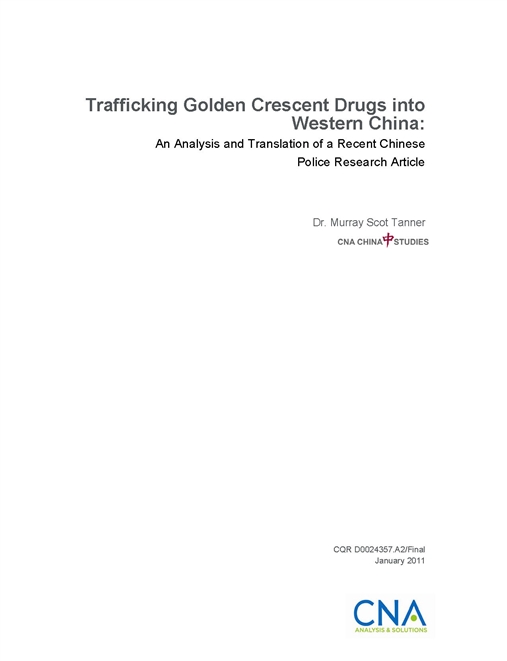Key Findings
- A 2009 open source Chinese police article—translated in this report— presents an unusually detailed picture of the Chinese police’s growing concerns about the trafficking of Golden Crescent drugs into western China. The article spotlights China’s anxieties about:
- The growing links between domestic Chinese traffickers—especially Xinjiang residents—and Central Asian-based international drug rings
- The increasing role of Nigerians and other nationalities in this trade, and the challenges this trend creates for Chinese investigators
- The evolving transport routes these traffickers use to cross the Chinese border
- The increasing sophistication of these international traffickers
- The exploitation of such open source Chinese police publications can support analyses of Asian drug trends and can facilitate exchanges with Chinese government officials and policy specialists about sensitive topics such as drug trafficking
Introduction to the Research Article and the Authors
In the past decade, Chinese law enforcement officials have grown increasingly concerned about the inflow of heroin and other illegal drugs from Afghanistan and the broader “Golden Crescent” region into western China’s Xinjiang Uyghur Autonomous Region (XUAR). A 2009 open source article in a Chinese police journal presents an unusually detailed picture of these police concerns. The authors, public security analysts Guo Jie and Mei Songlin, are researchers in the criminal investigation studies department of the Xinjiang region’s top police academy, located in the regional capital of Urumqi. Their article appears in the police academy’s academic journal, one of the more authoritative publications that would address this relatively narrow law enforcement policy issue.
This publication contains a good deal of rare data, including previously unpublished police statistics, information about the predominant routes used by smugglers, traffickers’ improving techniques and technological adaptations to Chinese law enforcement methods, the changing national and ethnic profiles of drug traffickers, and the rise of domestic drug selling networks within China.
This article also hints at some, though not all, of the institutional challenges that Chinese law enforcement forces confront in dealing with cross-border drug smuggling, including the increasing problem of interrogating smugglers who only speak “obscure” African and Central Asian languages that are presumably unfamiliar to police officials in Xinjiang. This article does not, however, discuss several other sensitive institutional shortcomings of China’s counternarcotics system. It does not mention what some Chinese officials see as a shortage of trained police personnel, especially in impoverished regions like Xinjiang. Nor does it address potential problems of coordinating law enforcement policy between Central and local-level Chinese officials. Nor does it note the reportedly high levels of corruption by local Chinese officials who act as so-called “protective umbrellas” for traffickers and other criminals.
Download reportUnlimited distribution.
Details
- Pages: 16
- Document Number: CQR D0024357.A2/Final
- Publication Date: 1/4/2011
